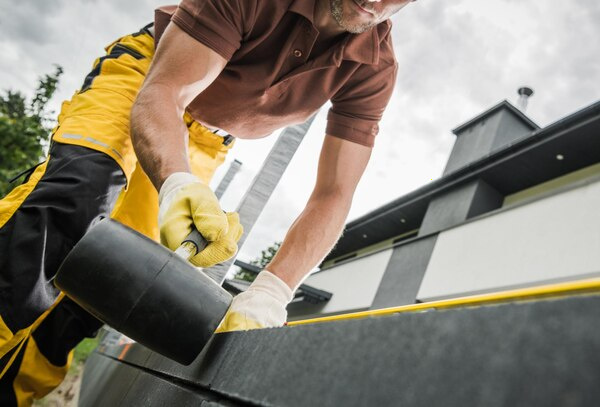The Future of Roofing: Trends to Watch in 2023
As we navigate through 2023, the roofing industry is experiencing significant transformations driven by technological advancements, environmental concerns, and the pursuit of more sustainable living. Here, we delve into the primary trends shaping the future of roofing this year.
1. Sustainable Roofing Materials
Sustainability continues to be a key focus across all industries, and roofing is no exception. The demand for eco-friendly materials has surged, with homeowners and businesses alike seeking options that minimize environmental impact. Recycled materials, such as reclaimed wood and metal, are gaining popularity. Additionally, the innovation of solar roofing tiles, which generate electricity while providing durable coverage, exemplifies the shift towards greener solutions.

2. Energy-Efficient Roofing Systems
Energy efficiency is no longer just a bonus feature but a necessity. Modern roofing systems are now designed with energy conservation in mind. Cool roofs, which reflect more sunlight and absorb less heat, are becoming a standard for both residential and commercial buildings. These roofs can significantly reduce cooling costs and improve indoor comfort.
3. Smart Roofing Technology
The integration of smart technology into roofing is a game-changer. Smart roofs equipped with sensors can monitor conditions like temperature, humidity, and structural integrity, providing real-time data to homeowners and property managers. This proactive approach allows for timely maintenance and repairs, ultimately extending the roof's lifespan and performance.
4. Innovative Design and Aesthetics
Aesthetic appeal is an increasingly important factor in roofing choices. Homeowners are moving beyond traditional shingles to explore creative designs and textures that complement their home's architectural style. From sleek metal panels to rustic clay tiles, the market is brimming with options that enhance curb appeal while maintaining functionality.
5. Climate-Adaptive Roofing Solutions
With the increasing frequency of extreme weather events, there is a growing need for roofs that can withstand diverse climatic conditions. New materials and construction techniques are being developed to deliver enhanced durability and resilience. Impact-resistant shingles, for example, offer better protection against hail, wind, and other harsh elements, making them a preferred choice in vulnerable regions.
6. Professional Installation and Maintenance Services
The complexity and specialization of modern roofing systems necessitate expert installation and maintenance. As a result, there is a rising demand for certified roofing professionals who can ensure the correct setup and upkeep of advanced roofing technologies. This trend underscores the importance of ongoing education and training in the roofing industry.
7. Cost Considerations and Financial Incentives
While the initial cost of innovative roofing solutions can be higher, the long-term benefits often outweigh the expense. Energy savings, increased property value, and reduced maintenance costs contribute to the overall return on investment. Additionally, various government incentives and rebates for energy-efficient home improvements make these advanced roofing options more accessible to a broader audience.
8. Integration of Solar Panels
The integration of solar panels into roofing systems continues to gain traction. Solar energy not only reduces electricity bills but also contributes to a greener environment. Innovative designs now incorporate solar panels seamlessly into the roof, avoiding the bulky, traditional panel look and enhancing the home's aesthetic appeal.
9. Green Roofs and Living Roofs
Green roofs, or living roofs, covered with vegetation, are transforming urban landscapes. These roofs offer multiple benefits, such as improved air quality, enhanced thermal insulation, and reduced stormwater runoff. They are also aesthetically pleasing and can provide a habitat for wildlife in urban areas.
10. Regulatory Changes and Safety Standards
Lastly, ongoing regulatory changes and updated safety standards are influencing the roofing industry. Stricter building codes ensure that roofing systems are compliant with the latest safety and performance requirements. Keeping abreast of these regulations is crucial for both manufacturers and consumers to guarantee the long-term success and safety of roofing projects.
In conclusion, the roofing industry in 2023 is defined by innovation, sustainability, and a move towards smarter, more efficient solutions. As these trends continue to evolve, they promise to reshape the landscape of roofing, offering enhanced performance, environmental benefits, and improved living conditions for all.